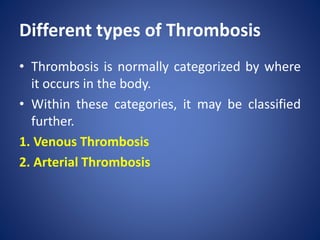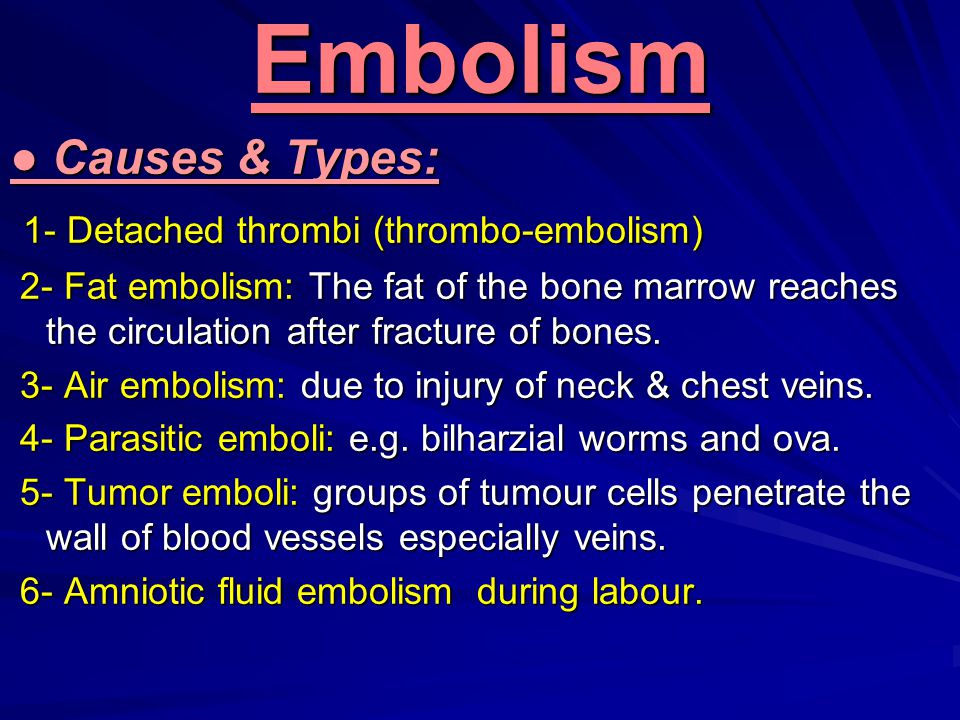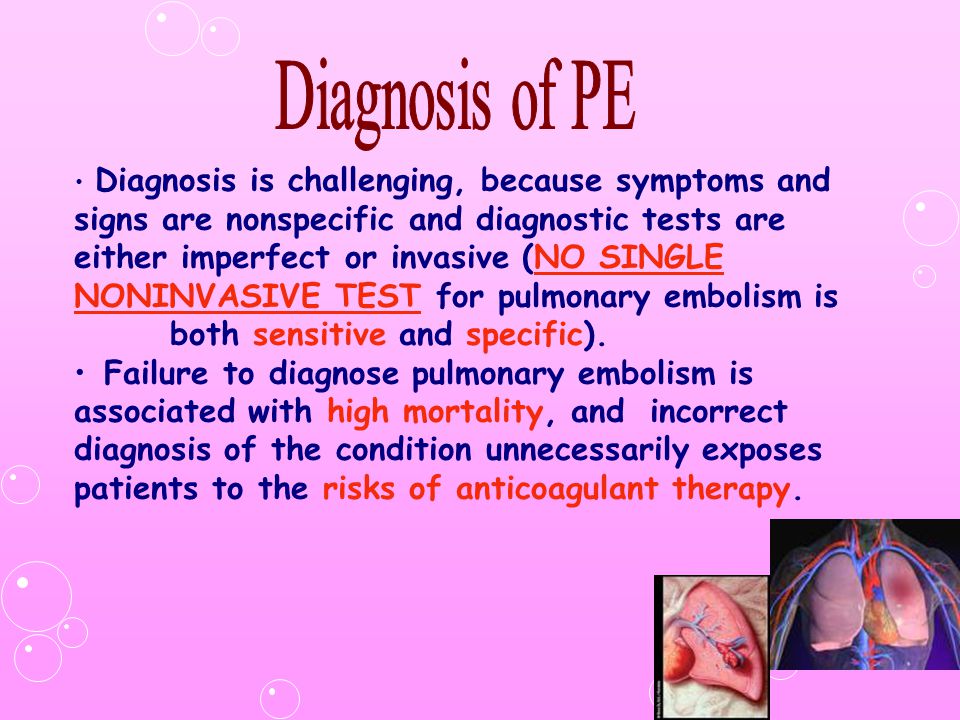Thrombosis vs. Embolism: Demystifying Blood Clots and Their Differences
In the ever-evolving world of medical terminology, it’s easy to get caught up in a web of unfamiliar terms and concepts. Two such terms, “thrombosis” and “embolism,” often perplex even the best of us. While they may sound similar and indeed share a connection, understanding the nuances between these two conditions is crucial for maintaining good health. In this comprehensive blog, we’ll delve into the fascinating world of Thrombosis vs Embolism, shedding light on their meanings, causes, and implications. So, grab a cup of your favorite brew, and let’s embark on this enlightening journey.
What is Thrombosis?

Let’s start our journey with “thrombosis.” Thrombosis is a term that refers to the formation of blood clots within our blood vessels, which obstruct the normal flow of blood. These clots can occur in both arteries and veins, although they’re more commonly associated with veins. Thrombosis can lead to various medical conditions, such as deep vein thrombosis (DVT) and even strokes.

Now, let’s take a closer look at the causes of thrombosis. The primary factors contributing to thrombosis include prolonged immobility, post-surgery or post-trauma situations, obesity, pregnancy, and certain underlying medical conditions. It’s worth noting that these risk factors aren’t exclusive, and a combination of factors can increase the likelihood of thrombosis.
read more about Rare Blood Diseases: Unveiled Challenges
Types of Thrombosis
Thrombosis is a versatile condition and can manifest in various forms. Here are some of its common types:

- Arterial Thrombosis: This type of thrombosis occurs in arteries, which carry oxygenated blood away from the heart. It can lead to conditions like myocardial infarction or stroke.
- Venous Thrombosis: Venous thrombosis occurs in veins, which transport deoxygenated blood back to the heart. Deep vein thrombosis (DVT) is a well-known example of venous thrombosis, often affecting the legs.
- Superficial Thrombophlebitis: Superficial thrombophlebitis involves clot formation in superficial veins, typically close to the skin’s surface.
- Deep Vein Thrombosis (DVT): DVT is one of the most talked-about forms of thrombosis. It usually occurs in the deep veins of the legs and can have severe consequences if not managed promptly.
What is Embolism?

Next on our journey, let’s explore the concept of “embolism.” Embolism is the sudden obstruction of a blood vessel by an embolus, which is essentially a foreign object traveling through the bloodstream. This foreign object can be anything from a blood clot to an air bubble or even a fat deposit. When it gets lodged in a smaller vessel, it disrupts blood flow, potentially leading to severe complications.
But what causes embolism? Common culprits behind embolism include thrombosis itself, as a thrombus (clot) can detach and become an embolus. Additionally, air or gas bubbles, fat particles, and other foreign materials in the bloodstream can also trigger embolism.
Types of Embolism

Just as with thrombosis, embolism has its own set of variations. Here are some of the common types of embolism:
- Pulmonary Embolism: This occurs when an embolus, often a blood clot from the leg (DVT), travels to the lungs, causing blockage in the pulmonary arteries. It can be life-threatening.
- Cerebral Embolism: Cerebral embolism involves the lodging of an embolus in the brain’s blood vessels, which can result in a stroke or other neurological issues.
- Systemic Embolism: Systemic embolism refers to embolus lodging in arteries that serve vital organs, like the kidneys or spleen.
- Fat Embolism: Fat embolism occurs when fat particles enter the bloodstream, typically due to bone fractures, and can travel to vital organs, causing embolism.
Thrombosis vs. Embolism: Key Differences
Now that we have a good understanding of both thrombosis and embolism let’s dive into the key differences that set these two conditions apart. These distinctions are crucial for accurate diagnosis and appropriate treatment.
- Location of Formation:
- Thrombosis occurs within a blood vessel, where a clot forms at the site due to various factors.
- In contrast, an embolus, causing embolism, typically originates from a thrombus or other foreign material within the bloodstream.
- Travel Mechanism:
- Thrombosis typically remains localized at the site of formation, causing a blockage or narrowing in the affected vessel.
- In contrast, embolism involves the embolus traveling through the bloodstream to a distant location where it lodges and obstructs the vessel.
- Clinical Implications:
- Thrombosis primarily leads to the narrowing or blockage of a blood vessel, which can lead to complications specific to that vessel.
- In contrast, embolism can result in more severe consequences when the embolus lodges in a critical organ, such as the heart, lungs, or brain, potentially causing life-threatening situations.
Risk Factors and Prevention
Understanding the risk factors and preventive measures for both thrombosis and embolism is paramount to maintaining good health.
Preventing Thrombosis:
- Stay active, avoid prolonged immobility, especially during long journeys.
- Maintain a healthy weight to reduce the risk of obesity-related thrombosis.
- Follow medical advice during pregnancy to minimize the chances of pregnancy-related thrombosis.
Preventing Embolism:
- Manage underlying medical conditions effectively to reduce the risk of thrombosis, which is a common precursor to embolism.
- Minimize exposure to air and gas bubbles during medical procedures, as this can be a trigger for embolism.
Diagnosis and Treatment

Both thrombosis and embolism require prompt diagnosis and treatment to prevent complications. This is where medical professionals step in, utilizing various diagnostic methods and treatment approaches.
Diagnosing Thrombosis:
- Diagnosis often involves medical imaging, such as ultrasound, which allows healthcare providers to visualize the clot’s location accurately.
Diagnosing Embolism:
- Diagnostic methods for embolism include various imaging techniques and blood tests to detect the presence of an embolus.
Treating Thrombosis:
- Treatment for thrombosis often involves anticoagulants, commonly known as blood thinners, which help prevent further clot formation.
- Lifestyle changes, such as maintaining an active lifestyle and healthy diet, also play a crucial role in preventing recurrent thrombosis.
Treating Embolism:
- Management of embolism can be more complex, depending on the embolus’s size and location.
- Treatment may involve medications to dissolve the embolus or medical procedures to remove it.
- Addressing the source of the embolus, which can be thrombosis, is also a vital aspect of treatment.
Real-Life Examples
To truly grasp the impact of thrombosis and embolism, it’s often helpful to explore real-life cases. Here are a few examples that demonstrate the real-world consequences of these conditions.
Thrombosis and Embolism: The Connection
While thrombosis and embolism are distinct medical phenomena, they are closely connected. Thrombosis often serves as the source of an embolus, which can lead to embolism. Understanding this connection is vital for healthcare professionals, as it guides them in diagnosis and treatment decisions.
Conclusion
In summary, thrombosis and embolism are terms that, while seemingly interchangeable, represent different aspects of blood clotting within our blood vessels. Both conditions can have serious consequences, making awareness, prevention, and early intervention crucial for maintaining good health. By comprehending the differences between them, individuals can take informed steps to protect themselves.
FAQs
- Q1: Can thrombosis lead to embolism?
- Yes, thrombosis can be a precursor to embolism if a part of the thrombus breaks off and travels through the bloodstream.
- Q2: Are there any specific symptoms of embolism?
- Symptoms of embolism vary depending on the affected area but often include sudden pain, difficulty breathing, and chest discomfort.
- Q3: Can embolism be completely prevented?
- While complete prevention may not always be possible, reducing risk factors and following preventive measures can significantly lower the chances of embolism.
- Q4: How are thrombosis and embolism diagnosed?
- Both conditions are typically diagnosed through medical imaging and specific blood tests.
- Q5: What are the long-term effects of thrombosis and embolism?
- Long-term effects can vary but may include chronic pain, organ damage, or complications depending on the affected site.
In conclusion, understanding the distinctions between thrombosis and embolism is essential for healthcare professionals and individuals alike. While they share a connection, their causes, effects, and treatments differ significantly. By staying informed and adopting preventative measures, we can mitigate the risks associated with these medical conditions.








 Viesearch - The Human-curated Search Engine
Viesearch - The Human-curated Search Engine
